

CarExpert.com.au
The CarExpert team's favourite cars of 2025
4 Days Ago
Toyota's 'Coupe High Rider' offers a rare-for-segment hybrid option, strong tech and safety as well as sharp design. How does it fare in 2021?
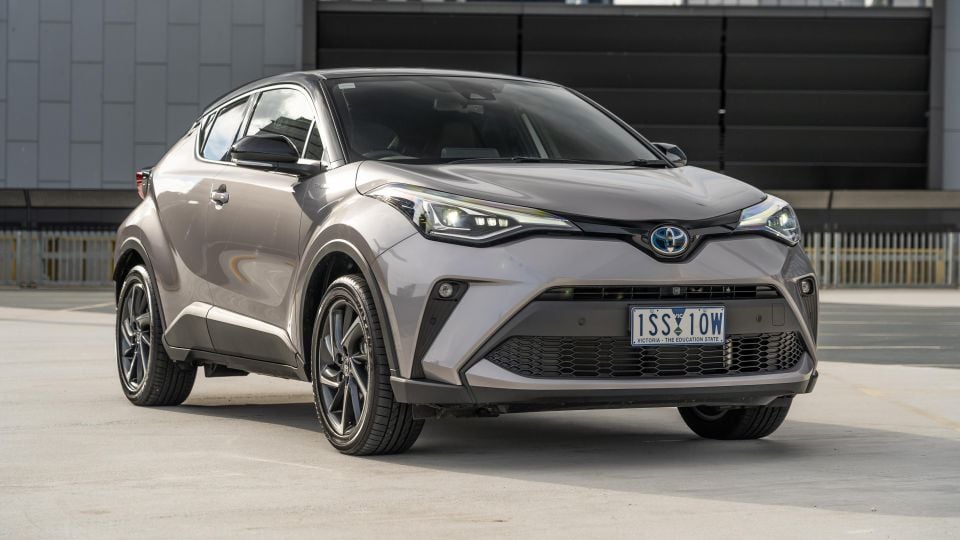


Marketplace Editor
New from
$30,915
excl. on-roads

Marketplace Editor
New from
$30,915
excl. on-roads


Marketplace Editor
New from
$30,915
excl. on-roads

Marketplace Editor
New from
$30,915
excl. on-roads
Quickly see how this car stacks up against its competition. Select any benchmark to see more details.
Where expert car reviews meet expert car buying – CarExpert gives you trusted advice, personalised service and real savings on your next new car.
It took years for Toyota Australia to bring the hybrid variant of its funky C-HR crossover to our market, but despite being fashionably late it’s been the only real hybrid mainstream small SUV until very recently.
The 2021 Toyota C-HR Koba Hybrid launched in the very late stages of 2019 as part of the facelifted range, and at the time stood alone in its class as the sole petrol-electric offering. Now, it’s joined by the Kia Niro Hybrid and the Subaru XV Hybrid.
Unlike other Toyota models like the related Corolla small car and the larger RAV4 SUV, the hybrid drivetrain is only available in two high-spec guises, both asking for about $40,000 on the road.
So does this coupe-styled, uber-efficient Toyota crossover make a case for itself in a not-so-crowded space? Or should you just step up to a RAV4 Hybrid instead?

While the 2021 Toyota C-HR line-up kicks off at just under $31,000 for the base GXL 2WD, the C-HR Koba Hybrid we have on test is priced from $37,665 before on-road costs.
All prices exclude on-road costs
Our test vehicle’s optional metallic paint and two-tone exterior finish adds $1350 to the asking price, bringing the as-tested sticker to $39,015 plus on-road costs or $43,405 drive-away with a Melbourne postcode.
That price point puts it between its Subaru and Kia rivals respectively.
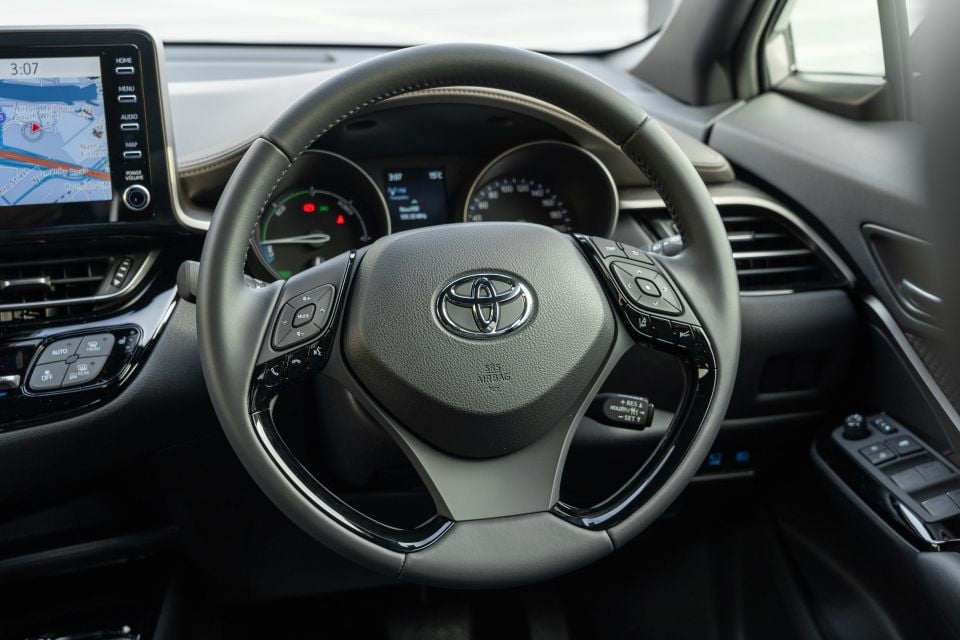
Buy your new car without the stress. It's fast, simple and completely free.

Great service from Travis and team, second time I have used this business would not hesitate to recommend them to anyone
Craig C.
Purchased a Ford Ranger in Sunshine Coast, QLD
CarExpert helped Craig save thousands on his Ford Ranger, now let us save you on your next new car.
Find a dealStepping up to the Koba grade gets you the following:
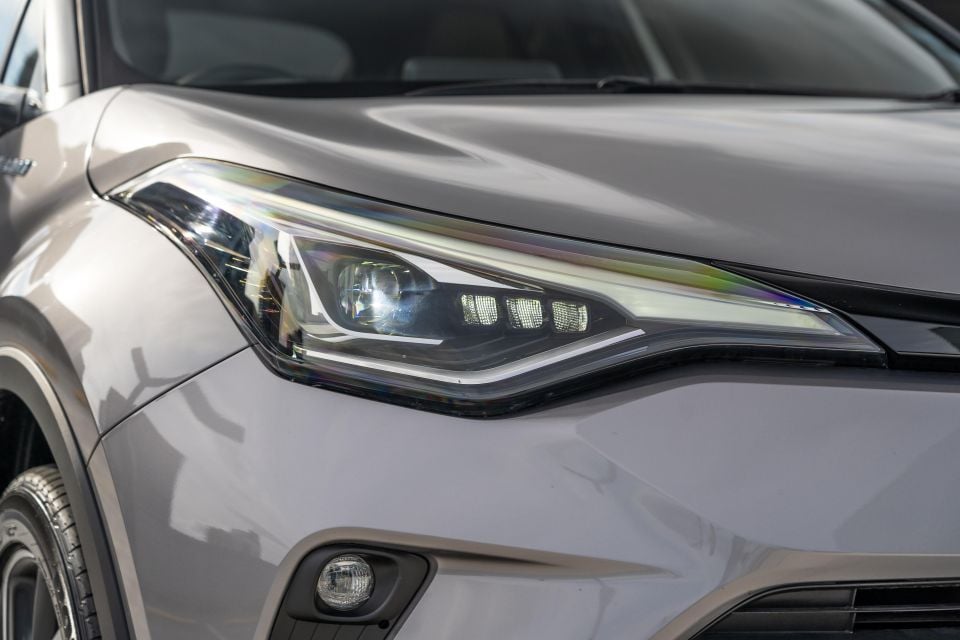
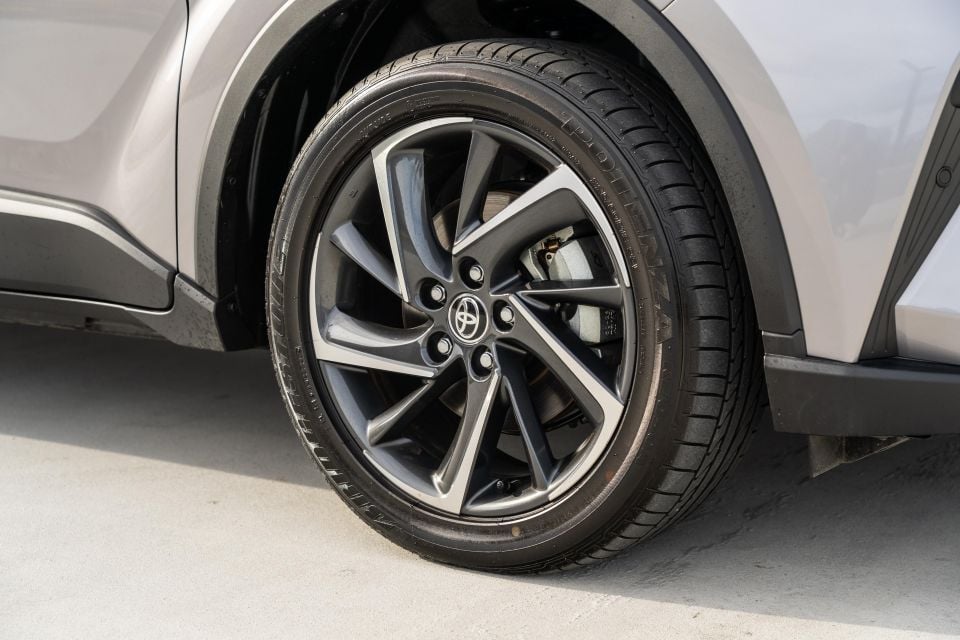
That’s on top of features included in the base GXL:

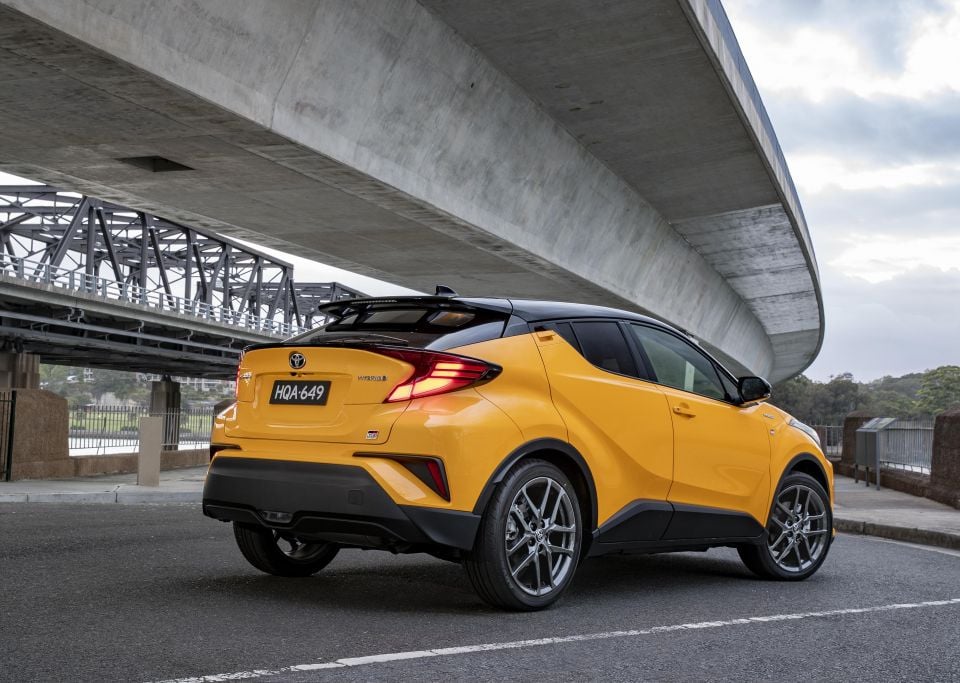
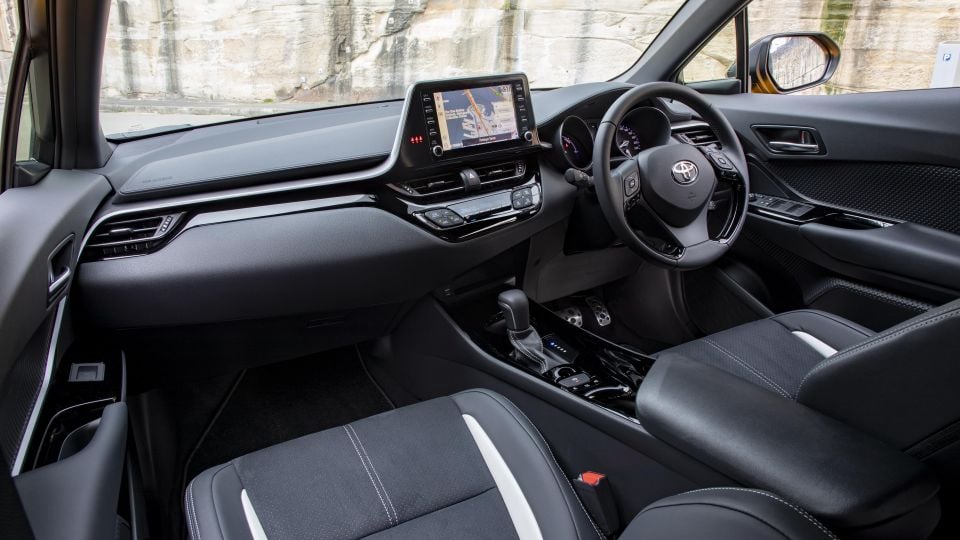
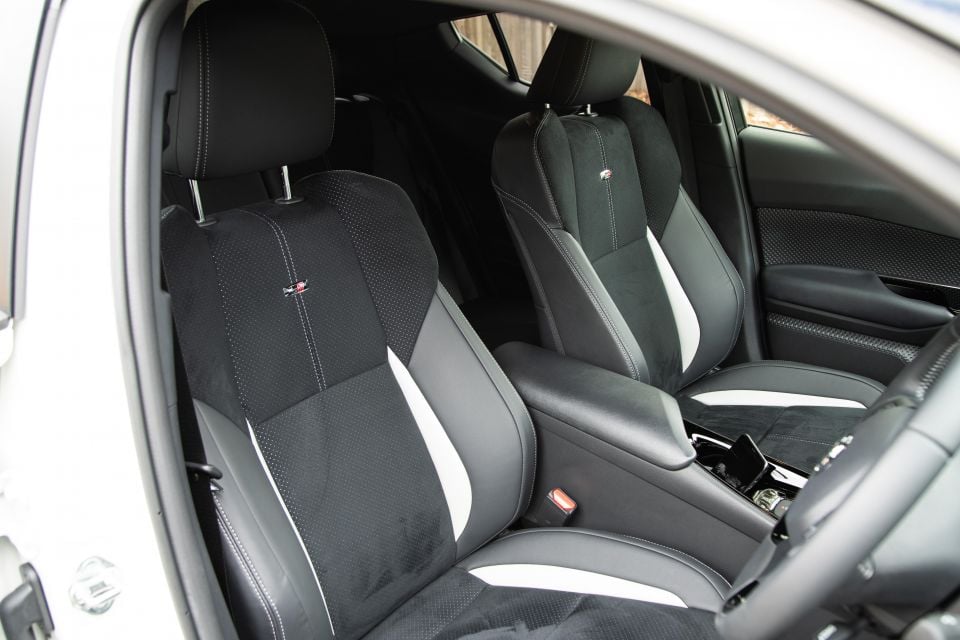
If you want a sportier look and feel, you can have the C-HR GR Sport Hybrid for the same price as the Koba Hybrid, which gets the following highlights:
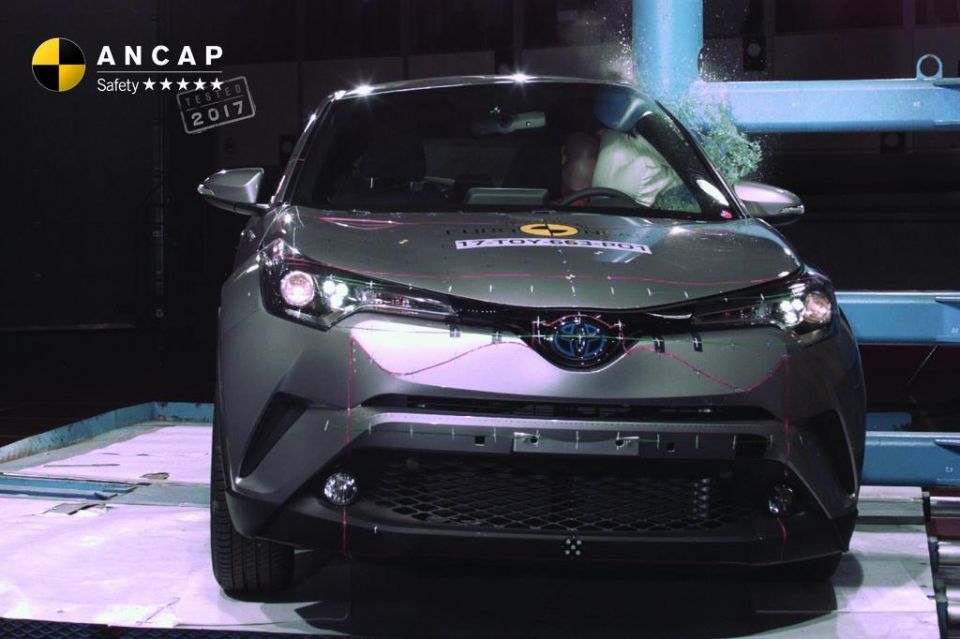
The Toyota C-HR wears a five-star ANCAP safety rating based on tests conducted on the pre-facelift model in 2017 by Euro NCAP.
It achieved scores of 87 per cent for adult occupant protection, 77 per cent for child occupant protection, 65 per cent for pedestrian protection and 68 per cent for safety assist.
Dual frontal, side chest, side curtain and driver’s knee airbags are standard.
For the 2021 model year, Toyota introduced daytime cyclist detection for the forward AEB, rear cross-traffic AEB for Koba variants, Lane Tracing Assist, traffic sign assist and Emergency Steering Assist (ESA).
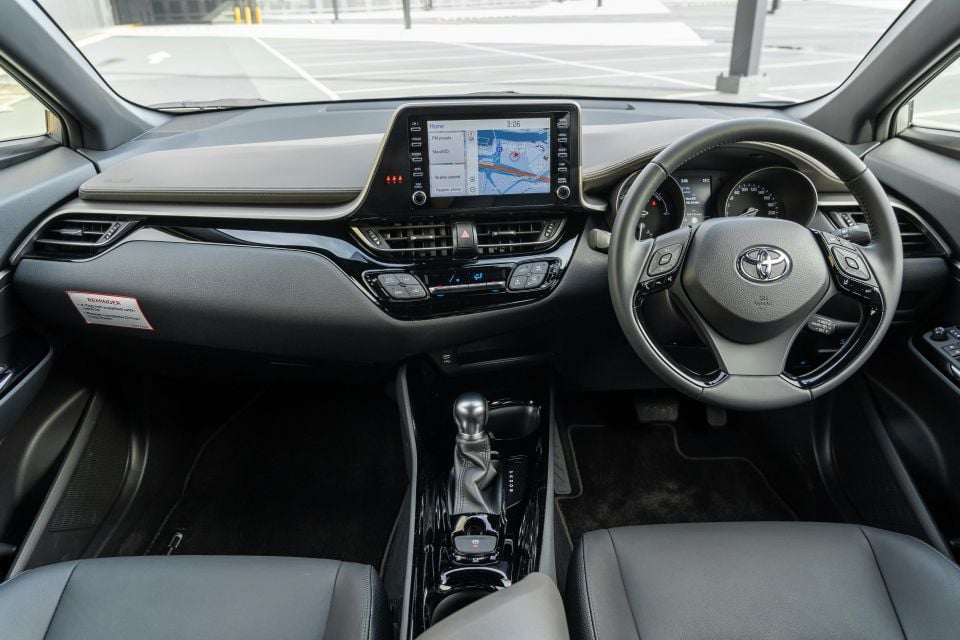
While the exterior got notable tweaks as part of the mid-life refresh, the C-HR’s cabin has barely changed since its introduction, with some minor exceptions.
The facelift brought a bigger 8.0-inch touchscreen that’s long been available in overseas markets, also including wired Apple CarPlay and Android Auto. Otherwise, the steering wheel, analogue instruments and overall cockpit layout is pretty much the same.
At its initial launch the C-HR was subject to high praise for its high ratio of soft-touch materials, elegant dashboard design and logical ergonomics.
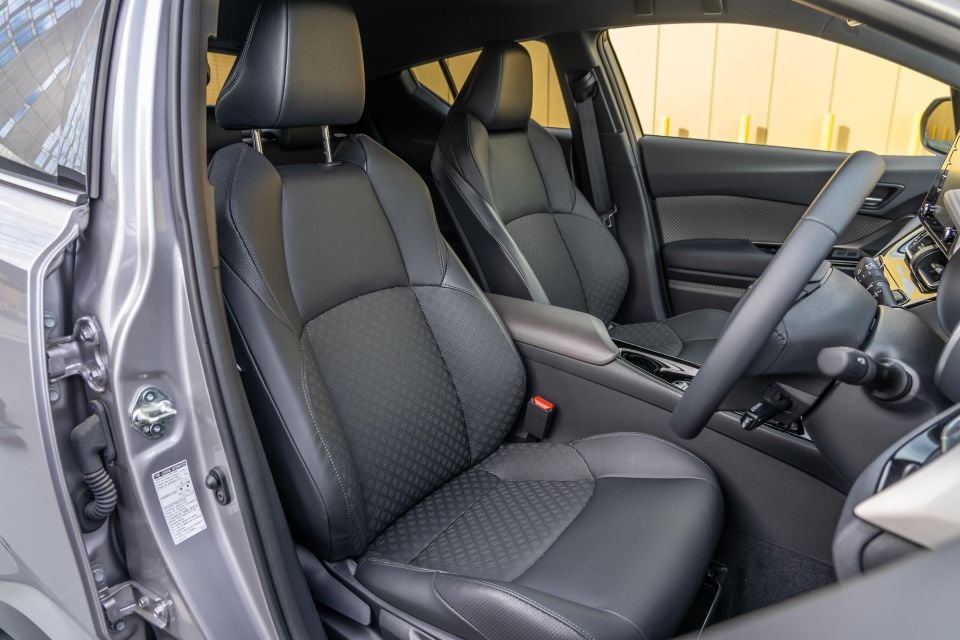

It’s still very much that way, with the larger touchscreen further adding to the cabin amenities, though newer rivals like the Mazda CX-30 have eclipsed the Toyota in offering a more upmarket feel in the small crossover segment.
Comfort and space is decent up front, with good electric adjustment in the driver’s seat as well as a wide range of movement in the manual steering column adjustment. The small, sporty steering wheel is a nice touch, too.
There’s also the C-HR’s diamond motif scattered throughout as before, including in the buttons, dial needles, door trim inserts and even indents in the black roofliner. It all combines to offer something a little different without being too avant-garde for the more conservative types.
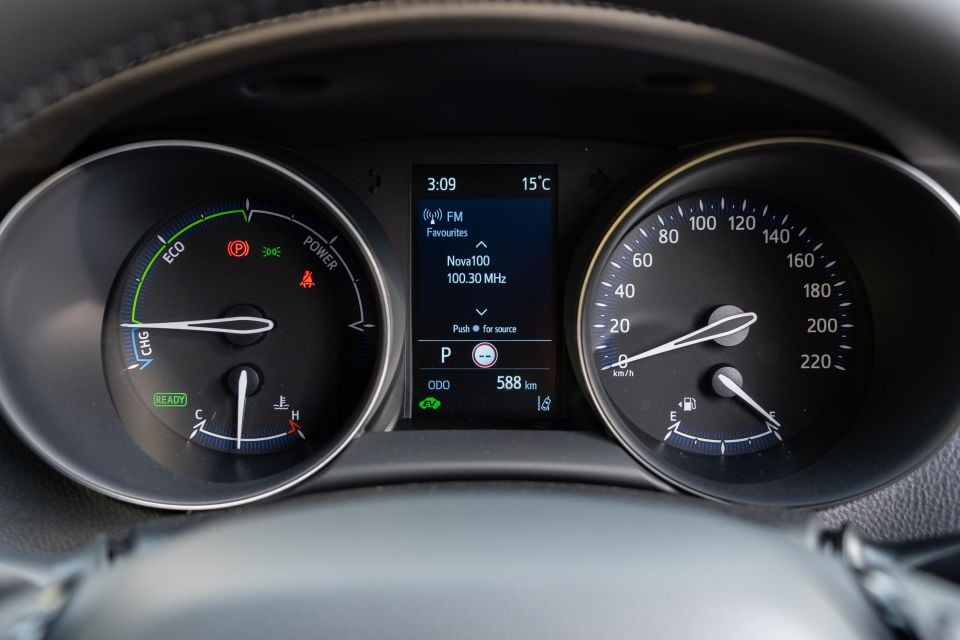
Worth noting for the hybrid is the substitution of an eco dial or power meter in place of a traditional tachometer. The TFT instrument display nestled between the power meter and speedometer carries over, offering trip computer menus and the ability to toggle various settings.
There’s a minimalist approach to buttons and switches, though the climate controls are still physical buttons. Everything works well and the switchgear has a solid, damped feel.
Storage up front is decent, with a cubby under the front-centre armrest, a cupholder next to that and then another cupholder ahead of the shifter. There’s a cubby to hold your phone under the centre stack but a larger phone like my iPhone 12 Pro Max won’t fit properly when connected via wire for Apple CarPlay.
The door bins are adequate if not as capacious as a VW T-Roc’s, as well.
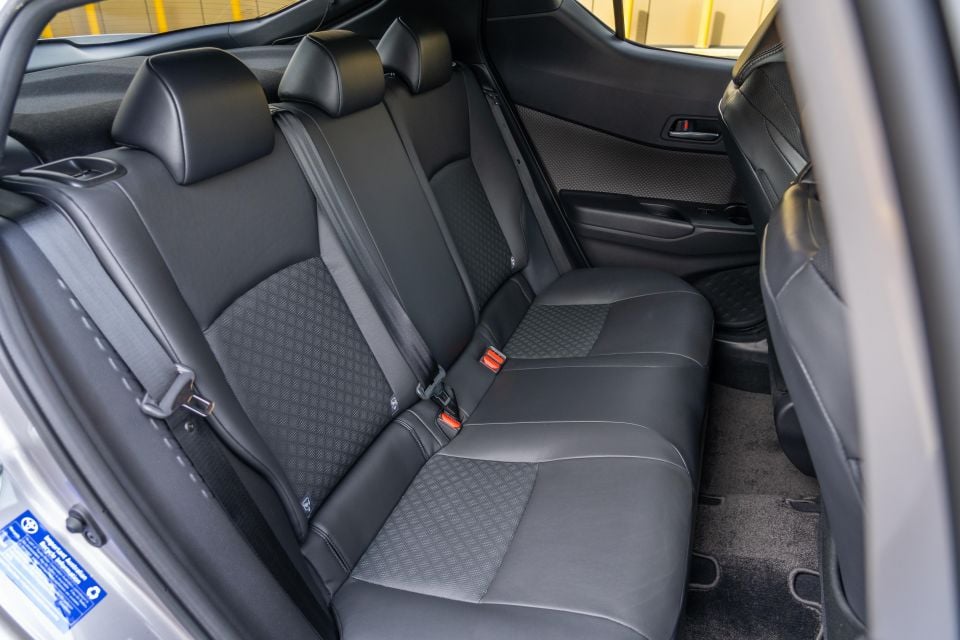
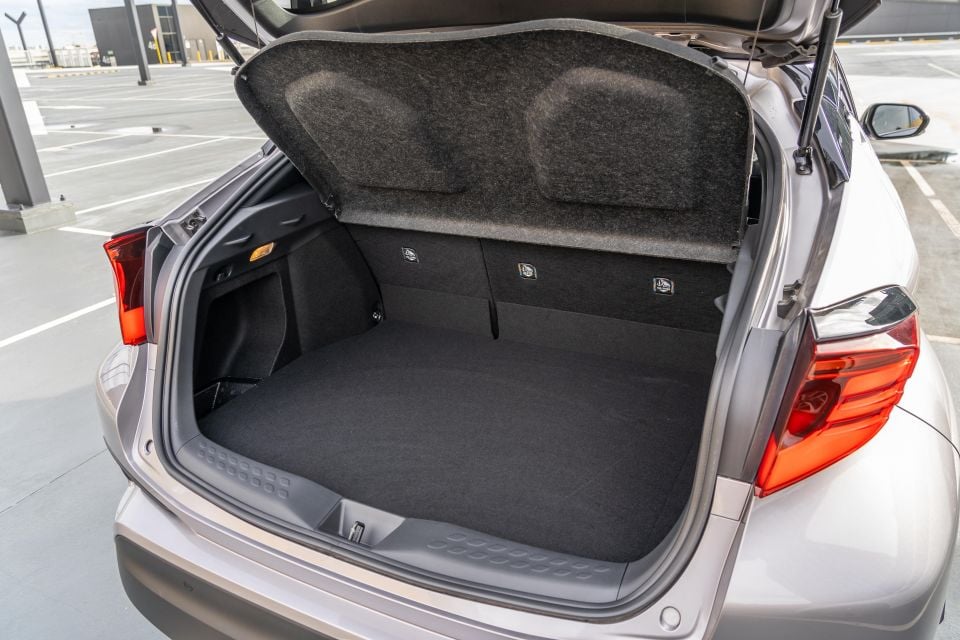

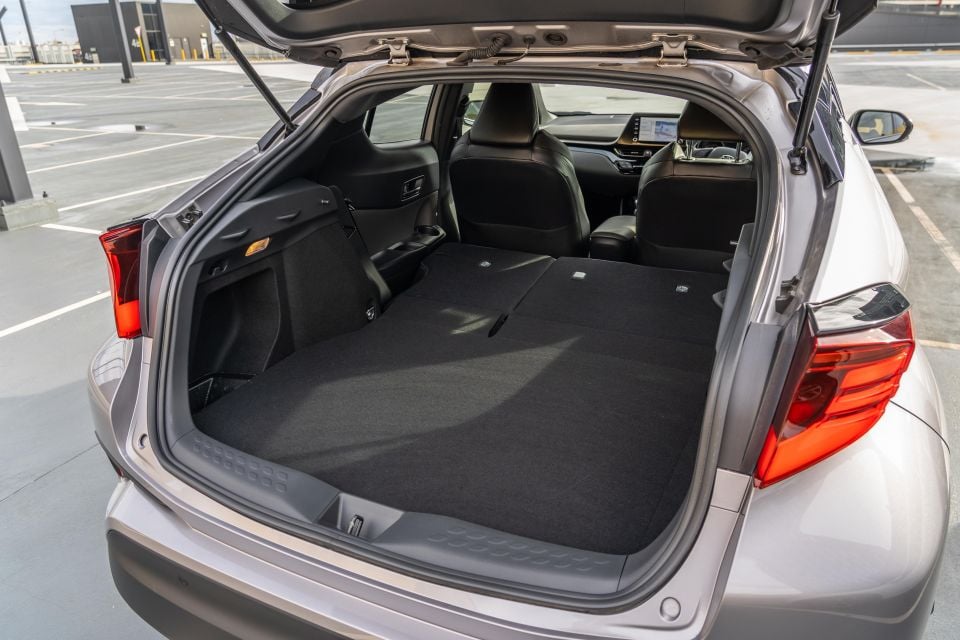
In the second row, you’ll find the C-HR isn’t the most family-friendly small crossover on the market. Legroom is on the tighter side if you’re sat behind taller front occupants, and the upswept window line makes outward visibility fairly limited. Kids prone to motion sickness will likely be complaining in the back.
There are ISOFIX mounts on the outboard positions as well as top-tether points for all three rear seats, though there are no air vents or power sockets in the rear, nor is there a fold-down centre armrest with cupholders. Both front seats have map pockets in the seatbacks, though, and there are bottle holders in the doors.
Further back again, the Toyota C-HR quotes 318L with the rear seats in place, which is small by class standards. Even the similarly priced Corolla ZR Hybrid hatchback quotes 333L courtesy of it having a tyre repair kit instead of a spare wheel.
The C-HR features a space-saver spare under the boot floor, and with the second row folded there’s a pretty flat load bay. Toyota doesn’t quote a boot volume in two-seat configuration.
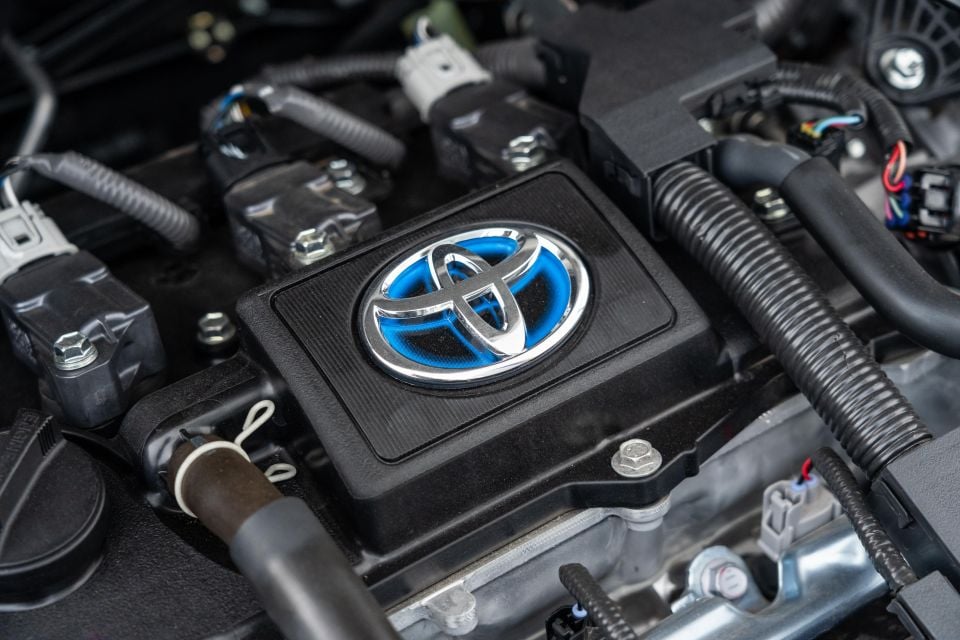
Power in the C-HR Hybrid comes from a 1.8-litre petrol engine teamed with an electric motor and battery pack shared with the related Corolla small car.
The front-driven petrol-electric drivetrain quotes a system output of 90kW, which is 5kW more than the 1.2-litre turbo petrol engine offered on GXL and Koba models.
Like other Toyota hybrid models, there’s no torque output quoted.
Drive is sent to the front wheels via a CVT automatic, and claimed fuel use is rated at 4.3L/100km on the combined cycle.
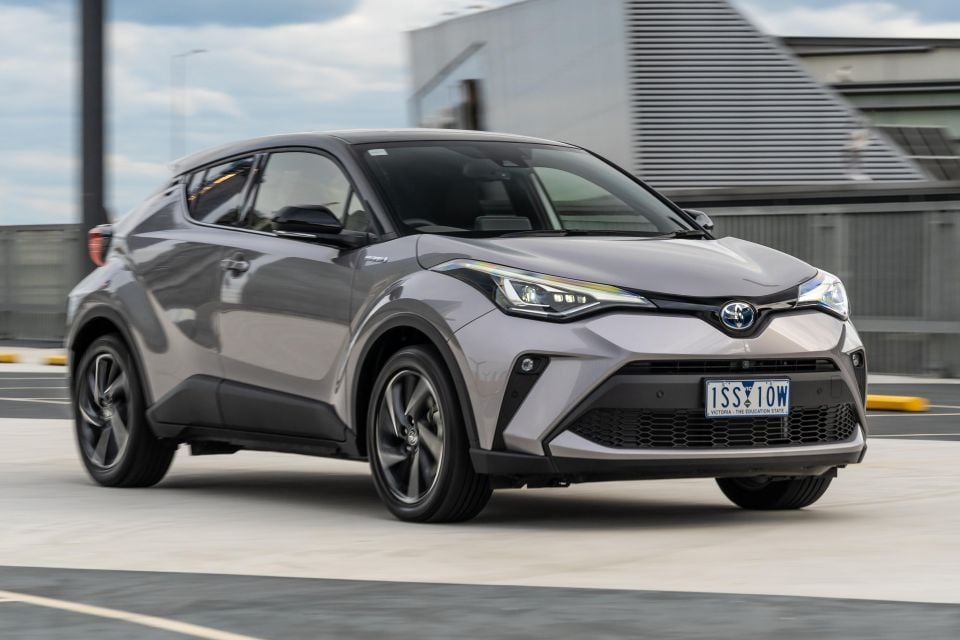
Being based on the same TNGA platform as the Corolla as well as featuring the same petrol-electric hybrid drivetrain, the C-HR has more than a few similarities to its hatchback/sedan sibling on the road.
Its keen chassis, compact dimensions and well-weighted controls make the C-HR a fun drive in urban streets and city traffic, with the steering and handling in particular offering a level of response and engagement that could be considered ‘fun’.
However, the 1.8-litre hybrid lacks the punch to go with the C-HR’s athletic underpinnings, and the low-powered petrol engine has a habit of getting quite noise and coarse under load.
With just 90kW combined, the hybrid system has to work pretty hard above 80km/h up hills or to overtake. It’s definitely better suited to the city.
It’s a crying shame Toyota Australia still doesn’t offer the 131kW 2.0-litre hybrid system offered with European models and in the related UX250h. That extra grunt would go a long way in matching the drivetrain to the chassis’ potential.
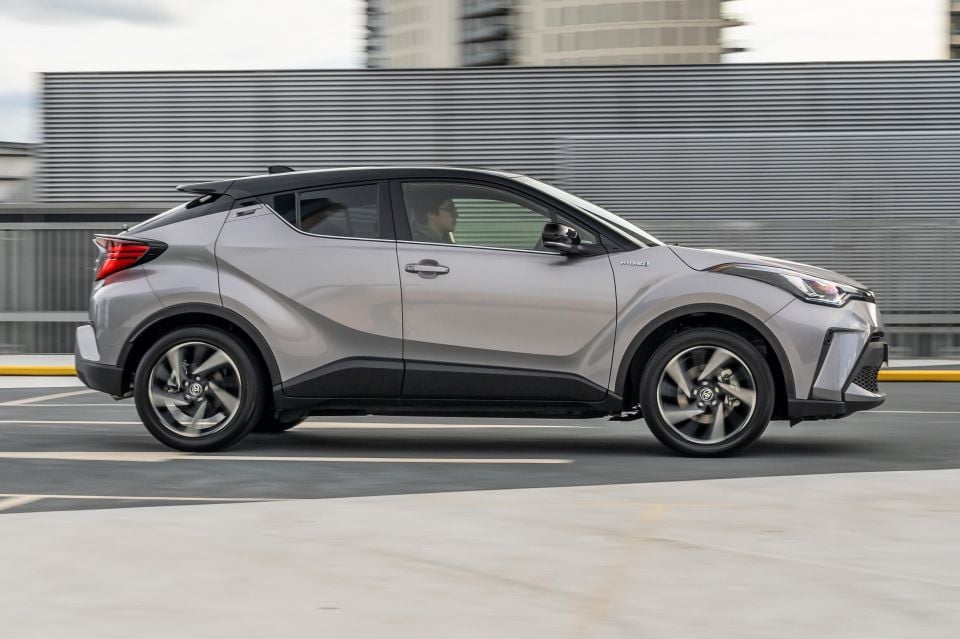
The CVT does a good job of extracting the most out of the drivetrain and then dropping revs or coasting once the required work is done. Again, though, the lack of grunt will be a sore point for many and the C-HR Hybrid is much better suited to urban environments.
Otherwise, the little Toyota crossover deserves high praise.
The ride is comfortable and pliant that allows for a natural level of body roll in corners that is again playing to that fun-to-drive factor. You just have no oomph coming out of said corners, even in the powertrain’s Power setting.
I really love Toyota’s steering calibration in its TNGA-based cars. It’s accurate, fluid and progressive with a lighter steering weight that is a good balance for everyday driving as well as more of the fun stuff.
There’s a hint of Euro premium about it actually, similar to my comments about the Mazda CX-30. No surprise then, as both the Toyota C-HR and Mazda CX-30 were designed with European tastes in mind.
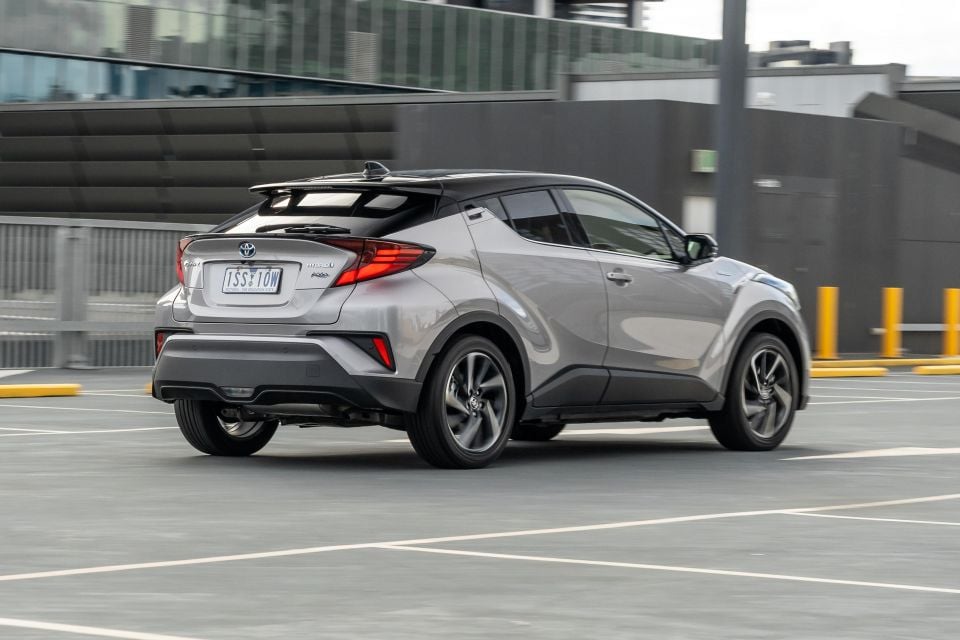
Where expert car reviews meet expert car buying – CarExpert gives you trusted advice, personalised service and real savings on your next new car.
If you want a sportier or sharper feel, the GR Sport Hybrid should serve you better with bigger wheels wrapped in lower-profile tyres, as well as GR-tuned steering and suspension with a more athletic bent. Same powertrain though.
Refinement in terms of NVH (noise, vibration harshness) is generally pretty good, though there can be quite a bit of road noise on coarser surfaces, not helped when the C-HR is drawing on just quiet electric power.
It’s no deal breaker, and it’s pretty refined in town, but like the drivetrain it limits the C-HR’s all-round capabilities.
Toyota’s driver assistance systems are some of the better technologies of their type, including Lane Tracing Assist (lane centring), adaptive cruise control with stop/go, blind-spot monitoring and rear cross-traffic alert.
All of them come in handy during a daily commute in traffic, though I feel some may not like the feel of lane centring as it can be a little conservative.
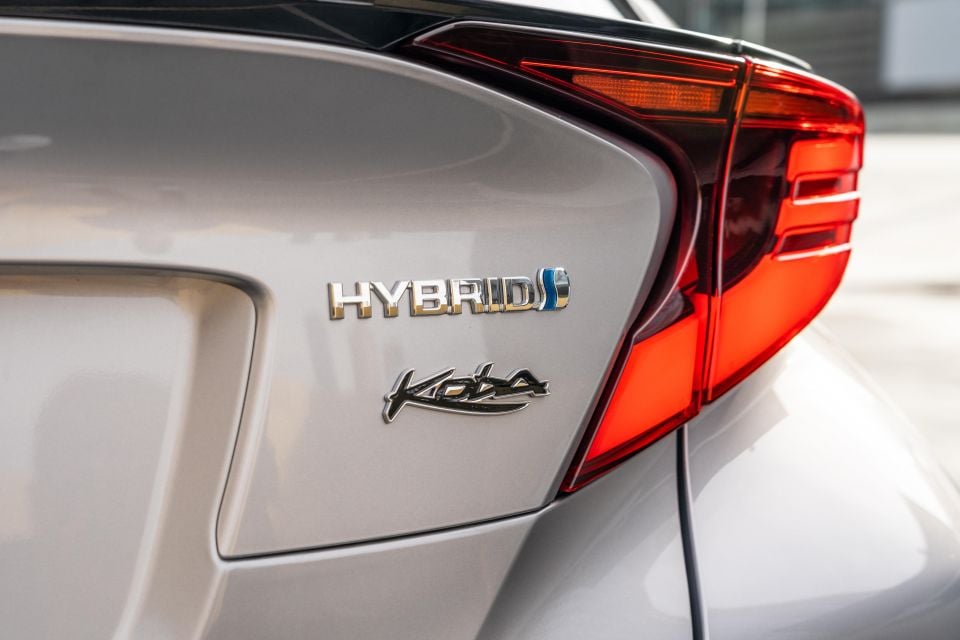
The Toyota C-HR is covered by the brand’s five-year, unlimited kilometre new vehicle warranty, while the hybrid batteries are guaranteed for up to 10 years provided you stick to the servicing schedule.
Maintenance is required every 12 months or 15,000 kilometres – whichever comes first – while each visit will cost just $200 for the first five years.
At $1000 in scheduled servicing costs over the first 60 months or 75,000km, the Toyota C-HR is arguably the most affordable vehicle in its segment for ongoing maintenance.
It’s a similar story for real-world fuel consumption. We saw the trip computer hovering around the 5.0L/100km mark during our time with the C-HR, but saw closer to 4.0L/100km on numerous occasions with more urban-skewed commutes.
That equates to some 800-900km of realistic range from the C-HR’s 43-litre fuel tank, and the hybrid can run happily on cheaper 91 RON unleaded.
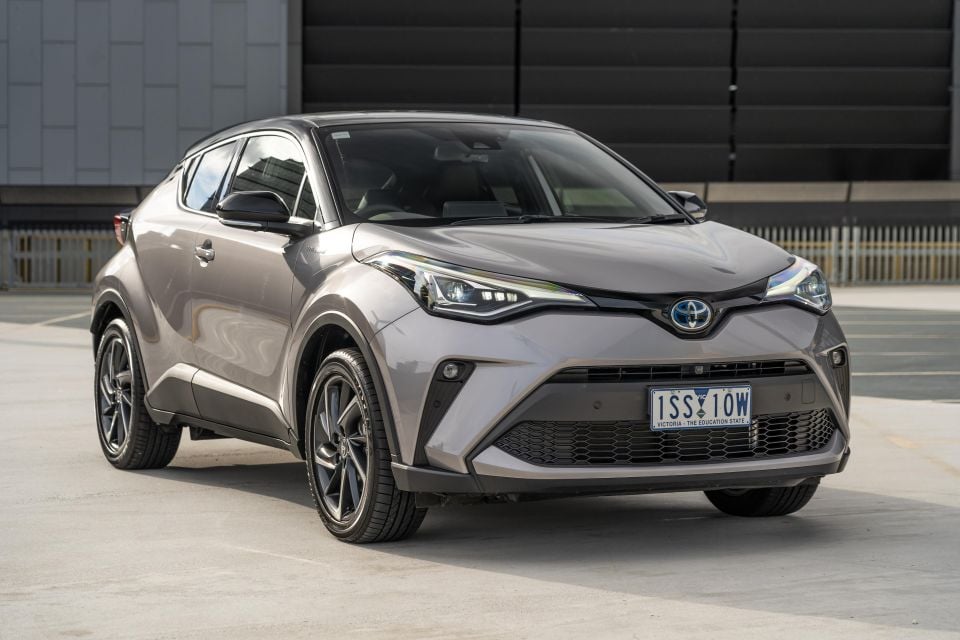
The Toyota C-HR has done well to stay relevant some years after its initial launch as the industry continues to evolve and its competitor list continues to grow.
It’s still one of the nicer compact crossovers in terms of ambience and on-road manners, with the fairly unique selling point of an available uber-efficient hybrid drivetrain.
The C-HR also packs a heap of safety features, has decent infotainment, and a swish coupe-like design that helps it to stand out – as do the vibrant colour options.

What lets it down, though, is the lack of grunt, as well as the average practicality from a back seat and boot standpoint. The price to pay for avant-garde design.
Speaking of price, the Koba Hybrid is over $40,000 on the road, right up there with the larger and more powerful RAV4 Hybrid or even a Camry Hybrid – and that’s before you look beyond the Toyota showroom.
That’s not to say it isn’t a good car, but there’s plenty of metal that you can get for around $40,000 that’s more powerful, more fun, more practical, and more capable on the open road – with or without hybrid power.
Also stay tuned for our comparison between this C-HR Koba Hybrid and the Kia Niro Hybrid Sport.
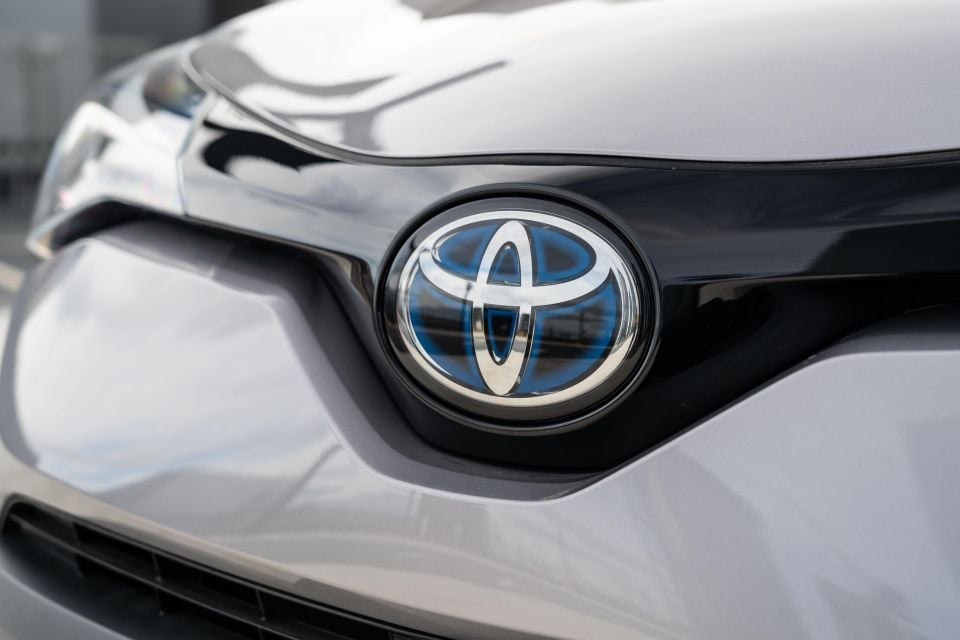
Click the images for the full gallery
MORE: Kia Niro Hybrid v Toyota C-HR Hybrid comparison MORE: Everything Toyota C-HR
Where expert car reviews meet expert car buying – CarExpert gives you trusted advice, personalised service and real savings on your next new car.
James Wong is an automotive journalist and former PR consultant, recognised among Australia’s most prolific motoring writers.


CarExpert.com.au
4 Days Ago


Damion Smy
5 Days Ago


Damion Smy
5 Days Ago


Josh Nevett
5 Days Ago


Max Davies
5 Days Ago


Ben Zachariah
6 Days Ago